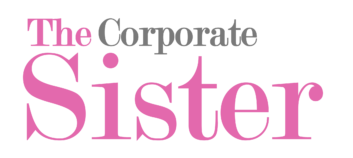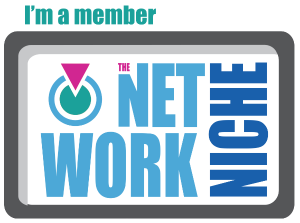
by Solange Lopes | Aug 21, 2017 | Start Your Business

3 Easy Ways to Take Your Business International
Ready to take your business international? Operating an international business may seem daunting. Yet, if you are already operating a successful domestic company, you are in a good position to launch internationally.
According to the Small Business Administration, two-thirds of the world’s purchasing power is in foreign countries. Here are three relatively easy ways to increase your business’s presence and profits by entering the international market.
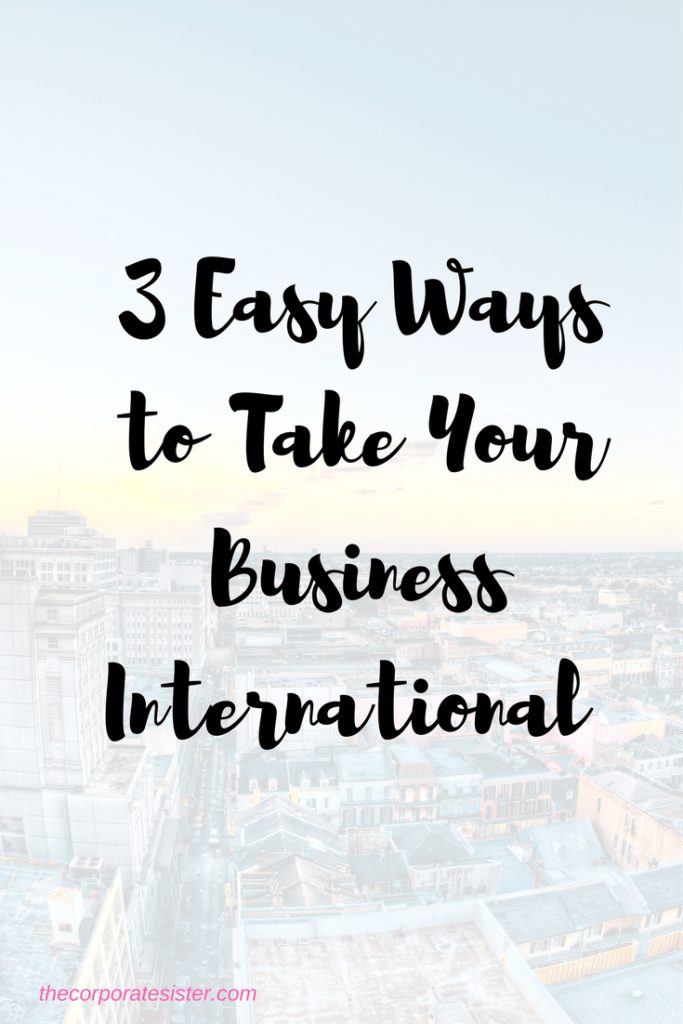
3 Easy Ways to Take Your Business International
-
Use an online marketplace
One fairly easy way to connect to foreign consumers is through online marketplaces like Alibaba, a Chinese e-commerce platform. Alibaba provides small businesses with access to international markets through internet technology and infrastructure. U.S.-based online marketplaces that can provide businesses with international market access include Amazon, eBay, and even Craigslist. Foreign and domestic platforms have pros and cons associated with them. For example, some producers and buyers have had issues with counterfeit goods sold via online marketplaces. You should determine the best platform for your business by considering factors like the platform’s reputation, performance, and cost in the same way that you would select any other service provider or business affiliate.
-
Work with a foreign distributor
Similar to online marketplaces, foreign distributors are intermediaries that introduce your business to foreign customers. A foreign distributor relationship can be even more advantageous than an online marketplace presence because the foreign distributor can also market and service your product. Think of the distributor as your company’s local representative. You can use a local branch of the U.S. Department of Commerce to help identify reputable distributors where you want to do business. Once your business has found a distributor, work with an attorney to negotiate an effective distribution agreement that at least addresses pricing, sales regions, quotas, and intellectual property rights.
-
Enter into a partnership
Last but certainly not least, a partnership may be the best way for your business to grow internationally. Many multinational corporations use partnerships to enter foreign markets. Not to worry, your business does not have to be a Fortune 50 to set up a foreign partnership. Partnerships can take different forms ranging from collaboration agreements to joint ventures. All you need to do is research the target foreign market, identify a suitable business partner in that market, and then agree on the terms of the partnership arrangement. International partnerships are well suited for businesses that need to leverage supply chain and manufacturing capabilities. Additionally, a partnership may be one of the only ways to penetrate a market that is closed to foreign businesses.
The above-mentioned points are just a few ways to grow your business internationally. Other means of growing internationally can be as simple as selling directly to foreign consumers or as complex as building a foreign division. Small and medium size companies should and can compete internationally if they want. There are government resources that provide helpful information on how to successfully enter the international market and skilled professionals who can facilitate international business transactions.
 Dorcia Carrillo manages a business and corporate law firm, the Law Office of Dorcia Carrillo PLLC, where she guides clients from entrepreneurs to executives through the intersection between business deals and legal documentation. Dorcia likes helping growing businesses with practical legal advice and workable solutions. She is a New York Giants fan and ardent supporter of the Alzheimer’s Association.
Dorcia Carrillo manages a business and corporate law firm, the Law Office of Dorcia Carrillo PLLC, where she guides clients from entrepreneurs to executives through the intersection between business deals and legal documentation. Dorcia likes helping growing businesses with practical legal advice and workable solutions. She is a New York Giants fan and ardent supporter of the Alzheimer’s Association.

by Solange Lopes | Jul 25, 2017 | Start Your Business

Our guest contributor, attorney and entrepreneur Dorcia Carrillo, shares some advice on the legal and business aspects of side hustles.
In this new economy, workers no longer expect to retire from the company at which they started their careers. Instead, people are moving from employer to employer and often participating in the gig economy. The gig economy, as defined by Investopedia.com, is characterized by temporary flexible jobs performed by independent contractors, freelancers, or consultants (side hustles). Independent contractor, freelancer, and consultant differ slightly, but for the sake of ease, I will use consultant to collectively refer to these three variations of a side hustle. Side hustles are by no means new but they are becoming much more widespread and respected than they were a few decades ago. In the early 2000s, the only people I knew who survived as freelancers or consultants were writers and IT professionals. Now people with other creative and technical skills are building their side hustles into respected brands.

I recommend that entrepreneurs create and use a template consulting agreement for their professional service side hustles. A standard agreement can be a competitive advantage and is an important tool for expanding a side hustle into a valued business. Of course, not every entrepreneur needs to have a written agreement in place for every project. Furthermore, consulting agreements will vary across services and sectors. The purpose here is just to highlight some, not all, of the key provisions that a consultant should consider including in a template consulting agreement.
-
Define the Business Relationship
First, a consulting agreement should state the relationship between the parties. It may seem obvious that a consultant is just that, but it is absolutely worth noting. More clearly, a consultant is not an agent or employee of her client and a consultant typically acts under her own discretion. These points are important because they may affect how a consultant operates. For example, a consultant is not paid as an employee and, therefore, may be subject to self-employment tax. Moreover, if the consultant is operating as an incorporated entity, the corporation rather than the individual will be signing and acting under the agreement.
-
Define the Scope of Work
Second, any consulting agreement should clearly state the services the consultant will provide. It is critical to identify what services are included in the scope of work. For example, a web developer should identify what if any maintenance, technical support, or upgrade services will be provided. It is also a good idea to note what services will not be performed. A well written scope of work, or statement of work as it is sometimes called, is the best way to avoid or alleviate confusion about performance. As a drafting tip, I recommend that on-going or complex project work be detailed in a separate attachment referenced in the consulting agreement rather than detailed in the main document.
-
Set the Payment Terms
Third and equally as important as the scope of work, are the payment terms. I know that negotiating a price for services is often the most difficult aspect of reaching an agreement. For this reason, it is imperative to precisely document the agreed upon pricing terms. A template consulting agreement should have a provision to note payment amount, frequency, and schedule. Additionally, the consultant must ensure that invoices are consistent with the terms of the agreement. If the agreement provides for an hourly rate, related invoices should be billed by the hour. As with work scope, the actual payment terms may be a referenced attachment to the agreement if the terms have to be explained in more than a few sentences.
-
Protect Intellectual Property
Lastly, a provision for intellectual property is another clause that some entrepreneurs, namely those who create or develop copyrightable works or patentable technologies, need in their consulting agreements. Intellectual property is any product of the human intellect that the law protects from unauthorized use by others. Some examples include music, software, and tools. Importantly, a consulting agreement can identify whether the consultant or client has rights to relevant intellectual property and what those rights are. All sorts of arrangements can be made for consultants and their clients to use, share, buy, sell, license, and reproduce the relevant intellectual property.
A template consulting agreement does not have to be a long complicated document. As stated, it should at least address the consultant-client relationship, scope of work, payment terms, and intellectual property rights. Other clauses that may need to be included relate to warranty, indemnification, assignment and transferability, and governing law. I recommend speaking with a knowledgeable attorney about your specific legal needs. Alternatively, automated services like Rocket Lawyer are available to get started with a basic contract. At the very least, I encourage consultants to carefully review and negotiate the terms before signing any consulting agreement that a potential client presents.
Happy consulting!
 Dorcia Carrillo manages a business and corporate law firm, the Law Office of Dorcia Carrillo PLLC, where she guides clients from entrepreneurs to executives through the intersection between business deals and legal documentation. Dorcia likes helping growing businesses with practical legal advice and workable solutions. She is a New York Giants fan and ardent supporter of the Alzheimer’s Association.
Dorcia Carrillo manages a business and corporate law firm, the Law Office of Dorcia Carrillo PLLC, where she guides clients from entrepreneurs to executives through the intersection between business deals and legal documentation. Dorcia likes helping growing businesses with practical legal advice and workable solutions. She is a New York Giants fan and ardent supporter of the Alzheimer’s Association.

by Solange Lopes | Jul 3, 2017 | Start Your Business
 If you’re an entrepreneur or a remote worker, you may have visited or used a co-working space. Actually, it appears that people who use them do thrive more than people working in regular office spaces. From seeing their work as more meaningful to feeling part of a community and having more job control, people in co-working spaces just seem to derive more happiness and meaning from their work.
If you’re an entrepreneur or a remote worker, you may have visited or used a co-working space. Actually, it appears that people who use them do thrive more than people working in regular office spaces. From seeing their work as more meaningful to feeling part of a community and having more job control, people in co-working spaces just seem to derive more happiness and meaning from their work.
Here in Australia, where I live, which by the way is an amazing place to launch a business, co-working spaces are great places to build connections. It also helps that Aussies are warm, effusive, and highly dynamic. They work hard, take success seriously, and love to experiment with new ideas.These qualities make the country a very interesting place to network.
It is also the ideal environment for entrepreneurs who are keen to push the envelope and create something different. All you’ve got to do is step into the right workplace to find engaging debate, innovative strategies, and collaborative enterprise. In co-working spaces like Servcorp for instance in Sydney, for example, and you’ll be right at the heart of the corporate action.
This guide to making friends and securing big opportunities in your co-working space will give
you some advice on how to communicate.
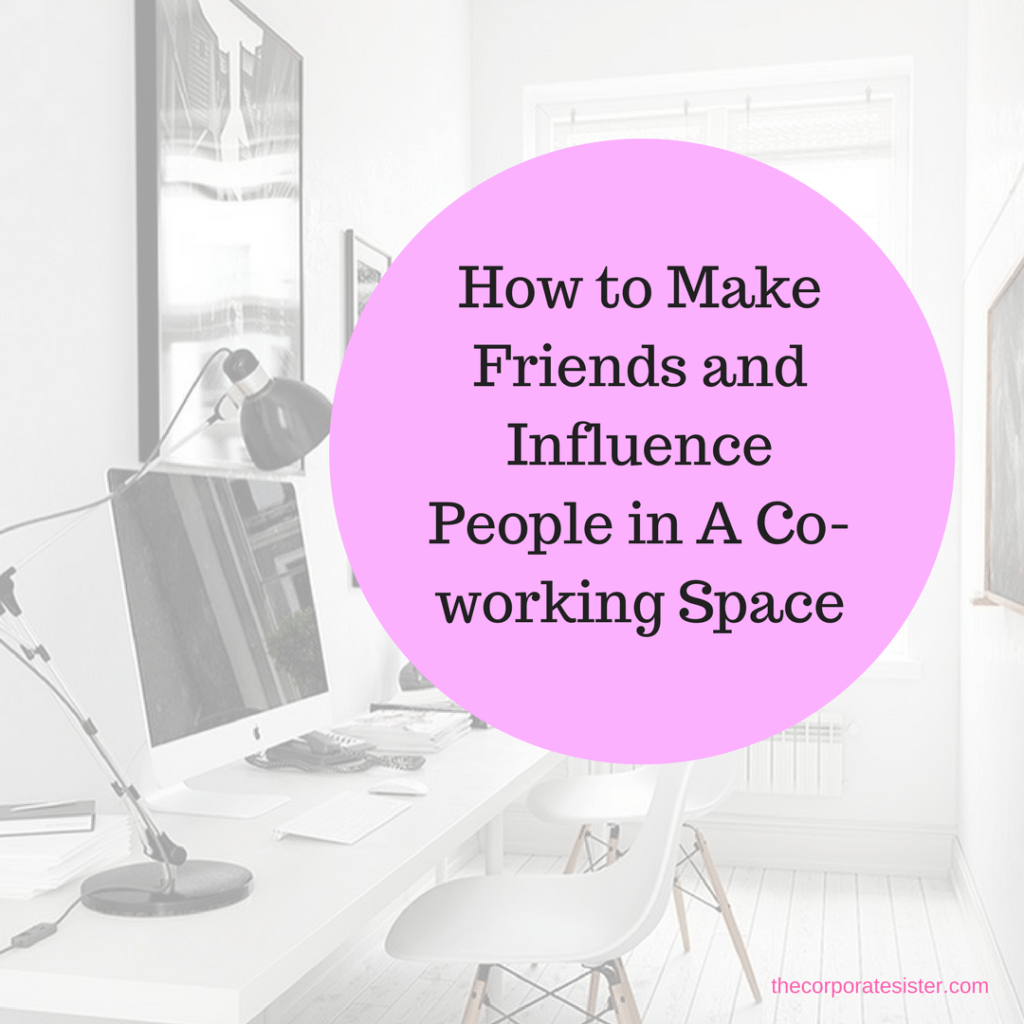
Acknowledge the Space
While all the best coworking facilities contain a mixture of collaborative and more private
spaces, it’s important to maximise the value of shared endeavour. You don’t have to be
chatty and open to others all the time, but small businesses do stand to benefit greatly from
collective thinking, creating, and brainstorming. Even if you just have casual conversations
with fellow entrepreneurs, they’ll still teach you a lot about the market.
Respect the Space
On the other hand, it is just as important to respect privacy when it’s clearly warranted or
desired. This can be tricky at first, particularly if you’re not used to sharing an office, but it’s
just a matter of letting common sense guide you. Strike up conversations with new
acquaintances during slow moments like coffee breaks or when you’re both setting up your
equipment in the morning. Then, it’ll feel less intrusive if you drop in on them with a
suggestion, question, or recommendation later.
Suggest a Labour Exchange
This is one of the simplest ways to cement a new relationship in a coworking space. These
shared facilities welcome high-end clients from all kinds of industries and walks of life. It
means that, at any one time, they’re filled with a broad variety of skills and talents. You’re
bound to have one which somebody else does not and you can use this to strengthen a new
connection. For instance, you could offer advice on website development, in exchange for a
hand designing your new business cards.
Be a Helpful Colleague
It is a little sneaky, but you can gain exposure for your brand by making promotional items
easily available in the coworking space. Most facilities won’t take kindly to tenants leaving
merchandise strewn just anywhere, but having a supply of branded pens, erasers, and
mouse mats at your workstation are acceptable. You’ll quickly find that explicitly hawking
them is not necessary because almost everybody will need a spare pen or pencil at some
point.
Show Your Passionate Side
It is true that coworking spaces represent an opportunity to make potentially lucrative
connections, but they’re also a great environment for creative discussion. In a shared office,
business owners and freelancers are equal, so everybody is free to get openly passionate
about what they do and why they love it. Australians are energetic people and they value
straight talking, so be open to the idea of sharing not just the space but also your goals.
Why Coworking Spaces Are a Great Place to Learn
The idea that entrepreneurs should close themselves off to the rest of the market and only
view their rivals with a suspicious gaze is an old one. It doesn’t really apply to the modern
business world because so much of our technology is now based on collaboration.
Coworking spaces are wonderful learning environments, because they place young
entrepreneurs at the heart of the action, among other motivated, fast moving professionals.
Author Bio : Alexandra Richards is an Australian business consultant, located in Melbourne. She takes a keen interest in business structures and work culture. Recently she has taken a particular interest in the benefit of having virtual office solutions to attract clients in Asia.
To Your Success,
The Corporate Sis.

by Solange Lopes | Jun 27, 2017 | Start Your Business |

At the BlogHer17 conference
This year, I attended my very first BlogHer conference in Orlando, after being encouraged to do so by my dear mentor Danyelle (check her out at The Cubicle Chick). The BlogHer conference is one of the biggest gatherings of content creators, social media influencers, and entrepreneurs in the US, garnering an attendance of over 2,000 women content creators every year who can connect in person and through apps like the Muses app. This incredible event also features female powerhouses in their own businesses, industries or sports. This year, I was honored to be in the same room as extraordinary women such as Serena Williams, Joy Ann Reid, Chelsea Clinton, Cecile Richards, Tai Beauchamp, Luvvie, and so many others…
As a newbie, experiencing a conference of this size in the presence of inspiring female role models, from the celebrity speakers to all the influential women in attendance, not to mention the supportive brands and sponsors, is almost surreal. Yet, it all comes down to one simple, very often overlooked fact: the power of being in the room!
There’s power about being in the same room as people who may have done the things you want to do, have the careers you want to emulate, or just speak to you in one way or another. Proximity brings in us a new level of renewed confidence and trust that if someone else could do it, so can we!
The conference started every morning with a short yet powerful meditation session filled with empowering quotes, led by amazing women such as CEO of the Still Going online meditation coaching service Starr Barbour. These meditation sessions were then followed by powerful keynotes, and various sessions with topics ranging from how to build a successful business, to SEO secrets and business tax tips.
Even more than the powerful tips shared during the conference, what impacted me, and I believe the majority of the attendees, was to be in the same room as successful career women and entrepreneurs. Here are 6 powerful lessons I learnt during three incredible days of #BlogHer17:
-
Do Not Fear Failure!
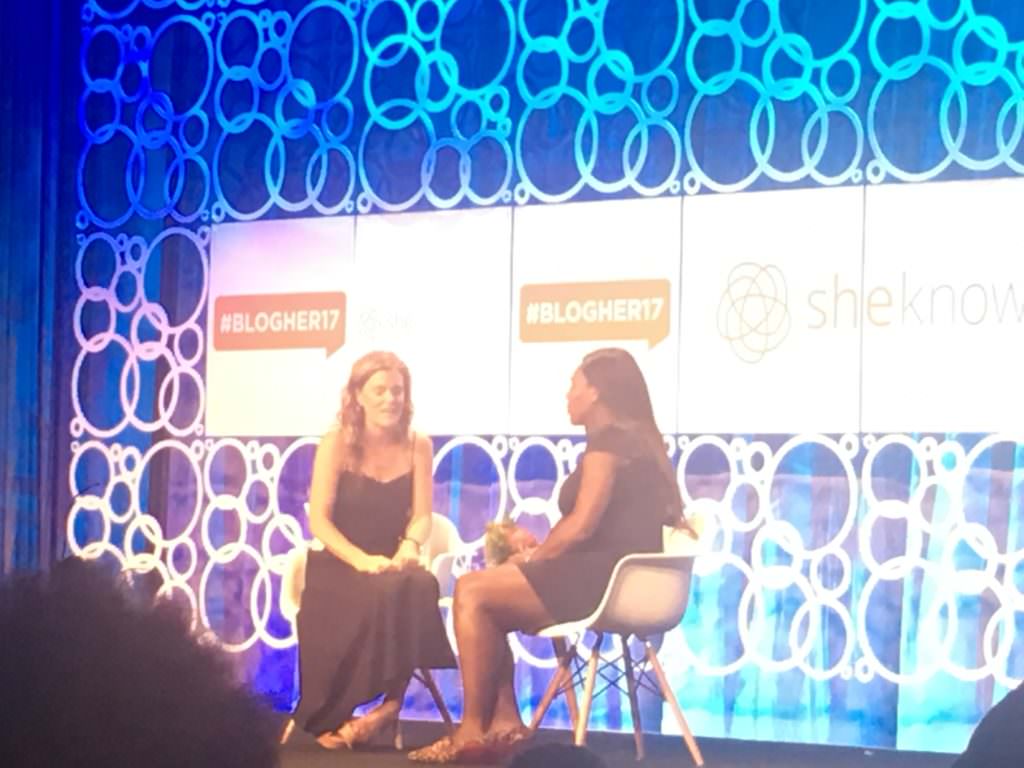
Serena Williams at the BlogHer17 conference
My most anticipated keynote was the one given by tennis champion Serena Williams, who walked on the stage as a proud mama-to-be, a living image of the strength and power of women everywhere! Her message, one of resilience, courage and championing other women, resonated with the entire audience! I mean, the woman won her 23rd grand slam while pregnant, and knows a thing or two about coming back from hardship to reach new heights!
“People have to make mistakes to become stronger” – Serena Williams
-
We need to fight for women’s health!
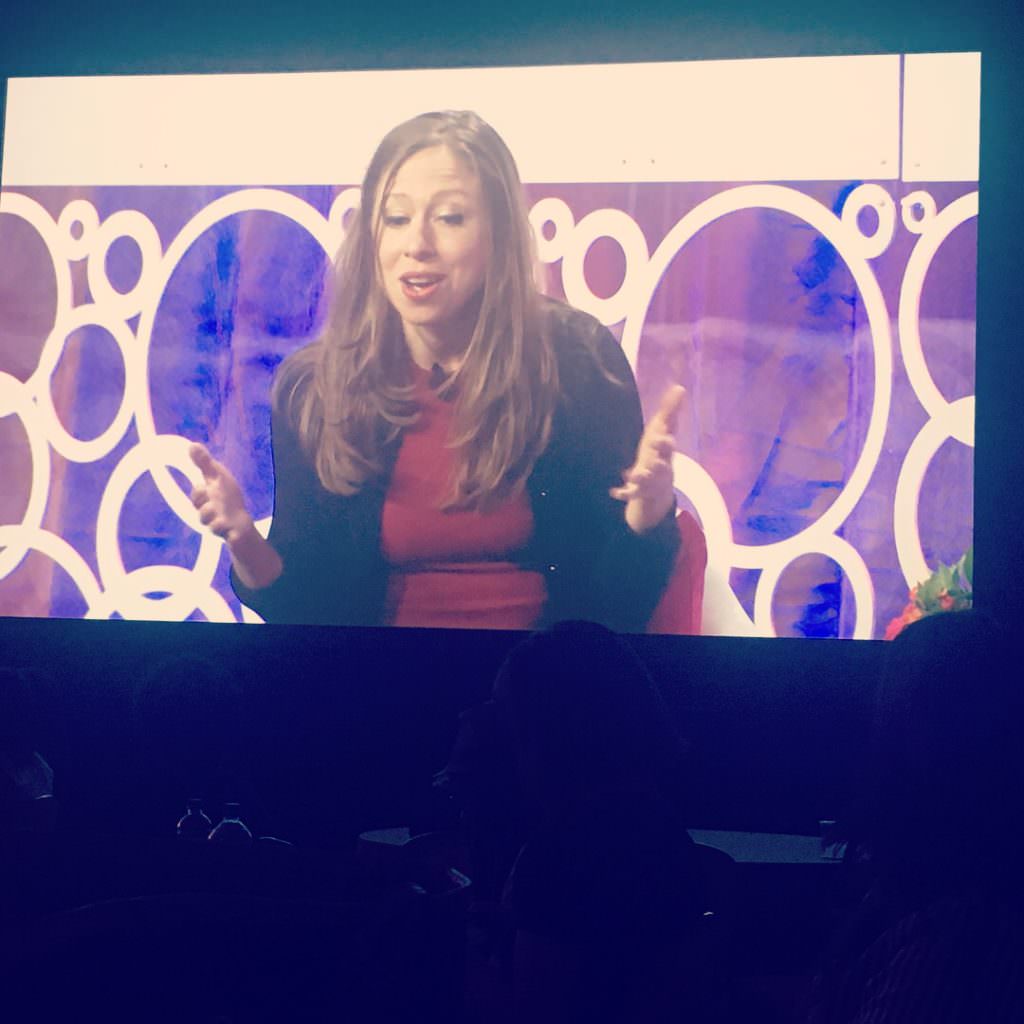
Chelsea Clinton at the BlogHer17 conference
Chelsea Clinton and Cecile Richards of Planned Parenthood’s keynote was a crucial reminder of how endangered women’s health is nowadays. Legislations are being passed that are putting maternal care in danger, and it’s our responsibility, not just as women, but as human beings, to ensure that we participate in the electoral process.
Both Chelsea and Cecile reminded us that not only do we have the power, but we also have the responsibility, to reach out to our state and local representatives to ask for the changes we need. It’s important that we play our role to advocate for ourselves, for our mothers, sister and friends.
“Women are the resistance in this country.” Cecile Richards
“Everyone has a mother. Maternal care is in danger.” Chelsea Clinton
-
You should buy your time instead of selling yours!
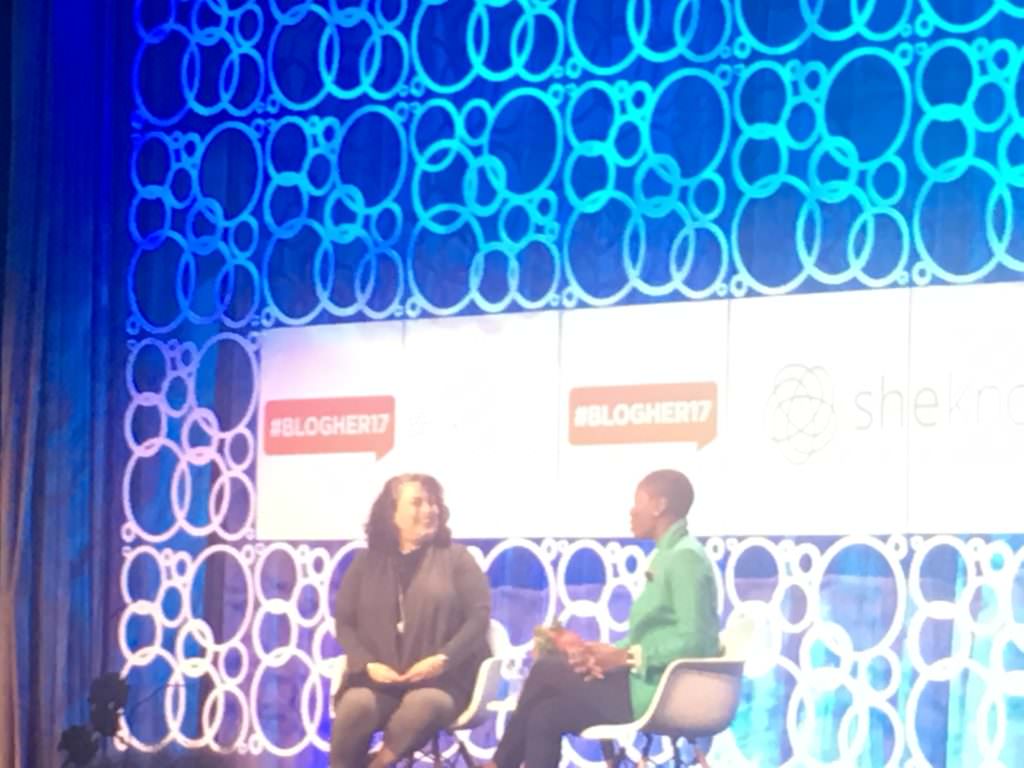
Luvvie Ajayi at the BlogHer17 Conference
This was a powerful quote and lesson from author and blogger extraordinaire Luvvie Ajayi, author of the New-York best-seller “I’m Judging You” (read my review of “I’m Judging You”). First of all, can I tell you about Luvvie being on stage! Hers was a hilarious keynote address that had the audience in stitches. Yet she was dropping all kinds of business and life truth bombs on us…
As a blogger who is now a successful author, Luvvie shared her story of becoming a full-time entrepreneur, writing a best-selling book, and running a thriving business. Out of it, she extracted impactful nuggets of wisdom for entrepreneurs and career women alike, such as the need to outsource our lives, and to buy time back so we can out more money in our pockets!
“You do not have the same 24 hours as Beyonce.” Luvvie Ajayi
-
Fill a void in the market!

Tai Beauchamp at the BlogHer17 Conference
Let me first preface this by saying I’m a huge fan of Tai Beauchamp! She’s a veteran journalist, entrepreneur and media personality, as well as the founder of TheTaiLife.com. She led the Passion to Profit panel on the first evening at BlogHer17, featuring social media influencer and ex-surfer and model Anastasia Ashley and style blogger turned swimwear designer Gabi Gregg.
The conversation was chock-full with tips to build and scale a business from scratch, basically! It was a powerful session for bloggers, influencers, and pretty much any entrepreneur looking to grow their business. My biggest take-away from it came from the talented Tai Beauchamp, and was around identifying a gap to fill in the market and positioning yourself accordingly.
“Ask yourself if there’s a void in the market!” – Tai Beauchamp
-
Use social media to disseminate the right information!

Joy Ann Reid, Ana Navarro and John Avlon at the BlogHer17 Conference
Another one of my sheroes also spoke at the conference. MSNBC’s own Joy Ann Reid shared the stage with political commentator Ana Navarro, and Editor-in-chief of the Daily Beast John Avlon, to discuss the current political scene.
My biggest take-away here came from Joy, as she emphasized the importance of the role of social media in politics, and how we can participate through this medium.
“I think social media has been great…to be able to disseminate information quickly.” Joy Ann Reid
-
Dare to Pitch Yourself!
Last but not least, one of the most powerful lessons I got from the BlogHer conference this year can be summarized in four words: “Dare to Pitch Yourself!”
There were many brands, from Olay to Best Buy and LG, that were in attendance, and were looking to connect with influencers like myself. Being there allowed me to really dare to introduce myself, share my message and pitch my brand. If you think about, those are three things we’re called to do constantly in our careers and businesses.

Checking out the LG vendor booth at BlogHer17 conference
It was also interesting to attend and vote in the Pitch Competition that took place later during the conference. How impactful to witness brilliant female entrepreneurs defend their business ideas and pitch them to the audience ! My personal favorites were Esosa Ighodaro’s money-making app CoSign, and Spotlight Girls Camps creator Lynn Johnson (Lynn Johnson ended up winning the Pitch competition).

Esosa Adeghboro, CoSIgn app creator presenting at the BlogHer17 Pitch Competition
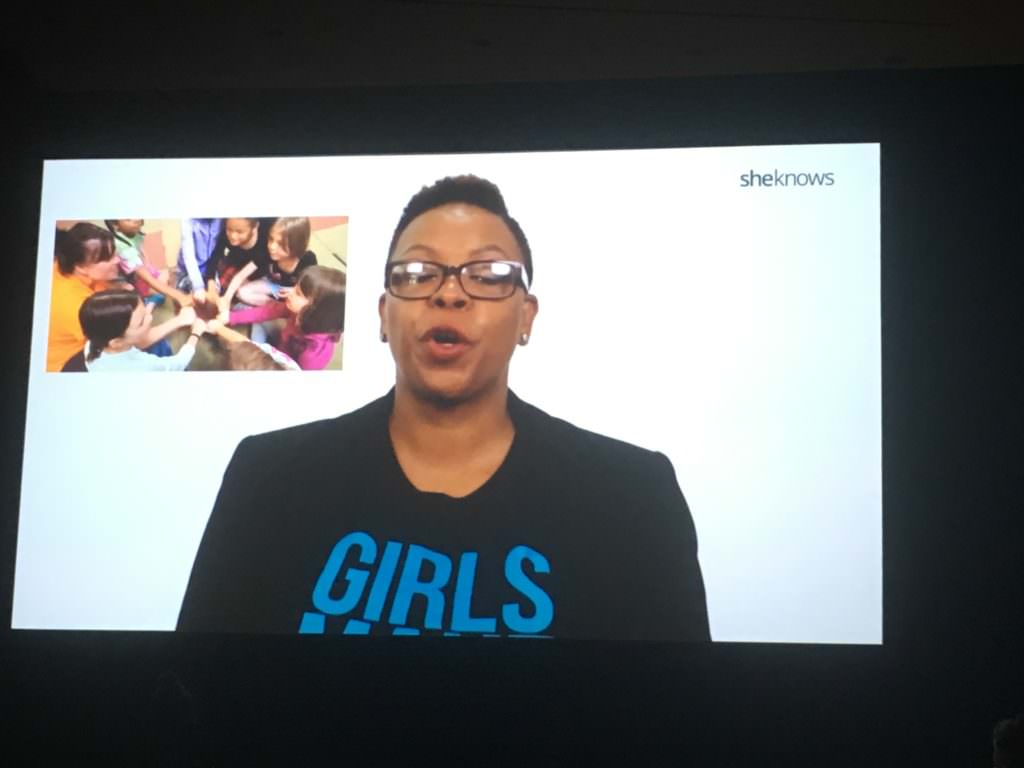
Lynn Johnson on her video pitch for the BlogHer17 Pitch Competition
I also had the pleasure to be interviewed by ForbesBooks Radio, and share my message about working women on their podcast (I will share it in a couple of weeks when it comes).

My interview with ForbesBooks Radio
As a recap:
- Do Not Fear Failure!
- We need to fight for women’s health!
- You should buy your time instead of selling yours!
- Fill a void in the market!
- Use social media to disseminate the right information!
- Dare to Pitch Yourself!
Overall the BlogHer conference was an amazing experience, which taught me invaluable lessons to implement in my life and business. Can’t wait for next year!
To Your Success,
The Corporate Sister.
by Solange Lopes | Jun 22, 2017 | Start Your Business
 As I’m writing this post, I’m sitting on a flight in a middle seat on my way to the BlogHer ’17 conference in Orlando. It’s a Thursday morning, and right about this time, I should be getting the kids up to get ready for camp, as I hurriedly rush to complete any pending freelance gigs or blog posting before work.
As I’m writing this post, I’m sitting on a flight in a middle seat on my way to the BlogHer ’17 conference in Orlando. It’s a Thursday morning, and right about this time, I should be getting the kids up to get ready for camp, as I hurriedly rush to complete any pending freelance gigs or blog posting before work.
Instead of my usual hurried morning routine spent between desperately attempting to get my little guy in the shower (something about his strong inner belief that showers are not needed by humans), coercing my daughter’s gorgeous and fierce curls into some form of a bun with my limited hairdressing skills, I’m sitting on a plane. Flying thousands of miles away to learn something new, but in the same token, paradoxically get back to who I’ve always been…
The BlogHer conference has been occurring annually for a few years now. This massive gathering of content creators, media moguls, social media stars, top brands, activist and fans, represents the culmination of expressive influence. Thousands of women meet every year at the intersection between expression and influence, across various industries and disciplines. Women like myself whose voices long to be heard.
Women who use what they have in their hands, in their lives, on their minds, to change the world, one voice at a time. Women like you and I….Except many women like you and I have not, or are still struggling to, tap into our own authentic voices. That is, without the guilt associated with doing anything remotely for yourself or according to your own plans…
Listen, I was trained as an accountant. Before that, I was trained to be an A-student. To follow the norms, walk within set boundaries, be docile, well-educated, and not too opinionated. Even before that, I was trained to make my mother, a single mother of four who made so many sacrifices to raise her children, proud. So I did as I was trained, like many of you. I went to school, got the good grades, got an honest job, and did the right thing. Except the right thing according to society is not always the thing that makes your soul sing…It’s not always the longing for your soul, the heart of who you were created to be…
Fast-forward thirty-something years later, I’m heading to BlogHer’17, looking forward to hearing some of my sheroes like Serena Williams, Joy Reid, Luvvie, Chelsea Clinton,and so many others, take center stage and share their stories. I’m heading to learn from, listen and connect with women who are consciously choosing to follow their purpose and let their voices be heard in the process. To many, it may just be a simple media and influencers conference.
To many more like myself, it’s an opportunity to step closer to identifying our voices. An opportunity to step away from who society tells us we “should” be, and be inspired to open up to who we really want to be.
Every time I attend a conference, networking event, or even a simple gathering of like-minded people connecting me to my purpose, it’s an opportunity to grow, learn, be inspired, and in return, inspire. It’s the power of stepping out of the ordinary into a space of possibility, opportunity and power! Yet above all, it’s getting closer to who you really are, the you that may get stifled by obligations, duties and responsibilities. The You that may have been trained to live, think and act a certain way. The You that is continuously re-discovering itself through the pile of life’s experiences…The You that always had a voice…
See you at BlogHer’17!
To Your Success,
The Corporate. Sis.

by Solange Lopes | May 16, 2017 | Find Your Purpose, Start Your Business
 Have you been dreaming of building your own business? Are you hustling in your side business before and after work, creating your empire on the low? Are you ready to transition from employee to entrepreneur?
Have you been dreaming of building your own business? Are you hustling in your side business before and after work, creating your empire on the low? Are you ready to transition from employee to entrepreneur?
If you’ve answered yes to any of these questions, you’re already going through what I call the shift. It’s that mind shift, that transition, during which you move from having an employee mindset to an entrepreneur mindset. And truth be told, it’s a scary, intimidating and quite challenging kind of shift…
Ask any entrepreneur out there, and they’ll probably tell you that one of the biggest obstacles to shifting from being an employee to an entrepreneur is not necessarily the money, or the commitment, or even the support. It’s the mindset.
After all, it’s more than about just creating a business. It’s an actual spiritual and emotional transformation that takes you from an established way of thinking, to a new, ground-breaking mentality. It’s leaving behind the belief that you should be dependent on a paycheck, the approval of bosses and co-workers, and a somewhat stable, albeit political environment> It’s plunging into a world of calculated uncertainty, a world where you must trust yourself to thrust yourself forward.
When I started my side hustle, I had no idea what this entailed. I thought it was cute to write blog posts and dip my hustler toes into the entrepreneurial pond. But even as a side hustler, you start realizing that in order to put yourself out there, in order to market and promote whatever it is that you have to offer to the world, you must first change your mind. You must first get comfortable with being uncomfortable, and kicking the fear out the door. For one of the first times in my life, I came face to face with the fear to even put my name on my work, the fear of others’ perceptions, and ultimately the fear of failure and being laughed at…
Entrepreneurship, in whatever capacity or form it shows itself in, is risky and fear-inducing. It doesn’t matter if you’re selling lemonade in your backyard as a kid, writing your first book, or hustling to market your brand after-hours.
It took a lot of looking at other successful entrepreneurs, a lot of reading books written by other entrepreneurs, and a lot of uncomfortable soul-searching, nervous twitching and chocolate eating to start even scratching the surface of understanding this shift. And the reality is, there are even few entrepreneurs out there who acknowledge and talk about this switch between the employee and entrepreneur mindset.
One of the few entrepreneurs whom I’ve heard discuss it and acknowledge is Robert Kiyosaki, author of the Rich Dad, Poor Dad book series and franchise. In his books, he often refers to the emotional and spiritual work needed to make the transition from employee to entrepreneur. It’s easy to think that it’s all about getting the money, the right investors, the perfect business opportunity. But there’s more to it…
The more you’re able to change your mindset from employee to entrepreneur, the more you’re able to ensure your success. The more you can enjoy the transition and thrive in it. Here are 7 switches you can start making today to go from employee to entrepreneur in your mind first:
-
Employee: “I’m afraid so I must conform” vs. Entrepreneur: “My fear fuels me”
Being an employee also means being a part of a system. And let’s be real, very often, if not most often, being part of a system also means being part of a certain way of doing things. It may be how it’s done in your company, or in your department, or even in your group. Which also implies a certain underlying sense of fear if we do not conform…But we don’t admit the fear often enough to start realizing what it makes us do…
However, being an entrepreneur means first and foremost admitting that fear is definitely involved. But it’s also learning to use that fear as fuel instead of as an obstacle. To use the fear as energy to create more, work harder and innovate more.
-
Employee: “Mistakes are bad” vs. Entrepreneur: “My mistakes make me succeed”
The more mistakes you make as an employee, the closer you may get to getting fired. Right? Mistakes are not very popular in the conventional world of business. They’re perceived as costing money, time and energy. So we see them as bad and try as much as possible to stay away from them. Even if that involves pointing fingers and shifting the blame…
But an entrepreneur knows to value mistakes as the pathway to success. It’s only when you make mistakes and learn from them that you can improve and get better. Didn’t Michael Jordan famously say: “I’ve failed over and over in my life, and that’s why I succeed”? Oprah was fired at 23, depressed in her early 30’s, and faced seemingly insurmountable life challenges. Edison invented the lightbulb only after about 1,000 attempts. What does that tell you about the power of mistakes and failing?
-
Employee: “Security is taking no risks” vs. Entrepreneur: “Security is taking calculated risks”
Security is a steady paycheck and a reliable 401k. However, employment at will says you can get let go without cause. And it has been proven that 401ks are questionable ways to save for retirement.
Where security in the conventional business world may mean getting a paycheck and saving, for an entrepreneur it’s a matter of taking calculated risks.
-
Employee: “I must know it all” vs. “Entrepreneur: “I’m constantly learning”
Entrepreneurs are constant learners. Whereas there’s often an implicit requirement as employees to “know it all”, or at least pretend that we do, it’s important to start shifting your mindset to one where you’re not afraid to admit you don’t know everything. One where you’re open to learning constantly…
-
Employee: “ I must be the smartest person in the room” vs. Entrepreneur: “I surround myself with people who are smarter than me”
Do you notice that successful entrepreneurs are not afraid to surround themselves with people much smarter than them? It’s about reaching a common goal rather than looking a certain way.
However, in many a corporate environment, in order to thrive, you may have to be perceived as the smartest person in the room.
-
Employee: “It’s important that I look good on the outside” vs. Entrepreneur: “Who I am inside is more important”
Going out on your own entrepreneurial venture doesn’t just require an enormous amount of guts. It also requires a deep internal shift based on strong faith and a commitment to better yourself.
Unlike in situations when employees may have to look, dress or speak the part to be deemed worthy…
-
Employee: “The goal is my next promotion” vs. Entrepreneur: “ The goal is the journey”
Look at most performance reviews and you’ll notice that the goals are clearly structured in terms of the next thing to do, have or achieve… The next promotion, the next advancement opportunity, the next raise, etc….
Yet the entrepreneurial journey is a process in and of itself. One that is built upon each achievement, each failure, each lesson learnt.
Have you made some of these switches in your own journey?
To Your success,
The Corporate Sis
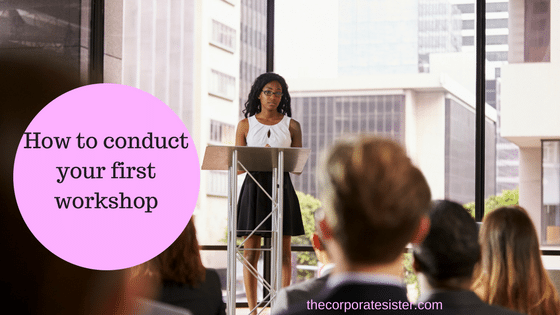
by Solange Lopes | May 8, 2017 | Start Your Business

This past week, I had the pleasure to host my first workshop on creating a strong brand for your career and business. To say that I was intimidated is an understatement! After all, conducting a workshop, especially your very first one, requires you to be adequately prepared, stand in front of an audience, and deliver valuable information, preferably without shaking, sweating profusely, or battling not to throw up your lunch…
As someone who tends to dread public speaking, signing up for a live workshop had me reaching for as much chocolate and coffee I could ingest in the least amount of time. Talk about stressful…
Interestingly enough, as the workshop happened (yes, I did show up), and went on, I enjoyed the experience so much that I actually wasn’t looking forward to it ending. I’m proud to say it was a success, which is why I’m here to share some of the nuggets of wisdom I learnt, applied and will enhance for my next workshop. These tips can be applied to virtually any presentation you may have to make in the future…
THE BEFORE
There’s always a “before” and after. When it comes to conducting any type of presentation, especially a workshop, the “before” happens to be as important, if not even more important, than the “during” or the “after”. What you do before standing in front of your workshop audience is crucial and determines how well you will actually do.
- Set Goals: What is the Workshop’s Why?
What are you trying to achieve with this workshop or presentation? Are you teaching your audience about enhancing their career or business? Is this to help with team building? Are you trying to improve existing procedures?
Understanding and clearly defining your workshop’s goals helps you FOCUS the direction of your workshop. Think of it as a rallying cry for your audience! Besides, knowing exactly what you’re after will help you communicate it more effectively to your audience, while avoiding going in all directions and confusing people. It’s also a great assessment tool at the end of your workshop, to determine if you’ve met your goal, and what you need to improve on for the next time.
Attendance or location may seem minor details at first, but they’re a hugely important part of conducting your workshop. Make sure you know exactly the location of your event. As the presenter, it’s your responsibility to get there ahead of time and be familiar with the room and equipment you’ll have at your disposal.
This also means making sure that everything is working as it’s supposed to before the event. The last thing you’d want is not to have a computer screen for your slide show on the day of, right? Make sure to confirm all these at least one day in advance, so the technical and logistical part of your presentation goes as planned.
This should have actually been the very first point of this post. Any presentation or workshop you’re conducting will require you to be mentally sharp, present, as well as emotionally available. This is not just a matter of regurgitating information, but of actually engaging your audience, impart your knowledge and leave everyone in the room better off than they were before you left.
Practice meditation or breathing exercises prior, do your power pose, repeat favorite affirmations, whatever it takes to get your mind to a peaceful and productive place!
Right along with defining goals for your workshop, make sure to have an agenda. I usually include it as one of the opening slides in my workshop if I’m using a PowerPoint presentation.
It helps guide your presentation, and give both you and the audience a clear idea as to the structure of the workshop.
THE DURING
While what you do before a workshop usually sets the tone for it, what you do during it can spell success or doom. Here a few tips to get a handle of your workshop as you deliver your outstanding presentation:
Ok, let’s be real, I can be a bit on the late side. But getting to the workshop site early made a significant difference!
For one, it helped me put myself at ease mentally and get my bearings, in terms of setting the equipment, get the technology side running and taking a last look at my notes.
But the most important factor for me was the ability to establish a personal contact with the audience before even starting. This included greeting the audience, getting to know everyone’s name, profession, etc.
The key to a successful workshop is engagement. So instead of standing in front of your audience lecturing, turn it instead into a living, breathing exchange of ideas.
Every section of my workshop started and ending with a question. After speaking for a while or noticing a lag of interest in the audience, I immediately switched into question mode, which kept them engaged.
- Use your audience as part of your presentation!
Another way to keep your audience engaged is to elaborate on their participation. Did one audience member mention they’re actively looking for a new job? Or that their department’s policies are in dire need of improvement?
Build on these tidbits of information to make your arguments even more relevant. It’s one thing to use generalized examples and another (better) to actually use your audience for tangible advice!
THE AFTER
Your workshop doesn’t end the minute you’re done with your last slide or argument. There are many ways to leverage your presentation even after you’re done:
While your workshop should be open to questions at regular intervals, closing it with an official Q&A is a great way to wrap up!
Aside from being able to help your audience further, the Q&A also helps you come up with other great ideas for future workshops!
Pass around a feedback sheet or ask for verbal feedback if possible. You want to know what worked and what didn’t, so you can improve the next time around! Plus it doesn’t hurt to get some encouragement along the way…
If possible, get your attendees’ email addresses and follow up with them after the workshop. It could be as simple as an email thanking them for attending, and encouraging them to stay in touch with you via your email list or any other medium you deem acceptable.
What other advice do you have for conducting a successful workshop?
To Your Success,
The Corporate Sis

 Dorcia Carrillo manages a business and corporate law firm, the Law Office of Dorcia Carrillo PLLC, where she guides clients from entrepreneurs to executives through the intersection between business deals and legal documentation. Dorcia likes helping growing businesses with practical legal advice and workable solutions. She is a New York Giants fan and ardent supporter of the Alzheimer’s Association.
Dorcia Carrillo manages a business and corporate law firm, the Law Office of Dorcia Carrillo PLLC, where she guides clients from entrepreneurs to executives through the intersection between business deals and legal documentation. Dorcia likes helping growing businesses with practical legal advice and workable solutions. She is a New York Giants fan and ardent supporter of the Alzheimer’s Association. 